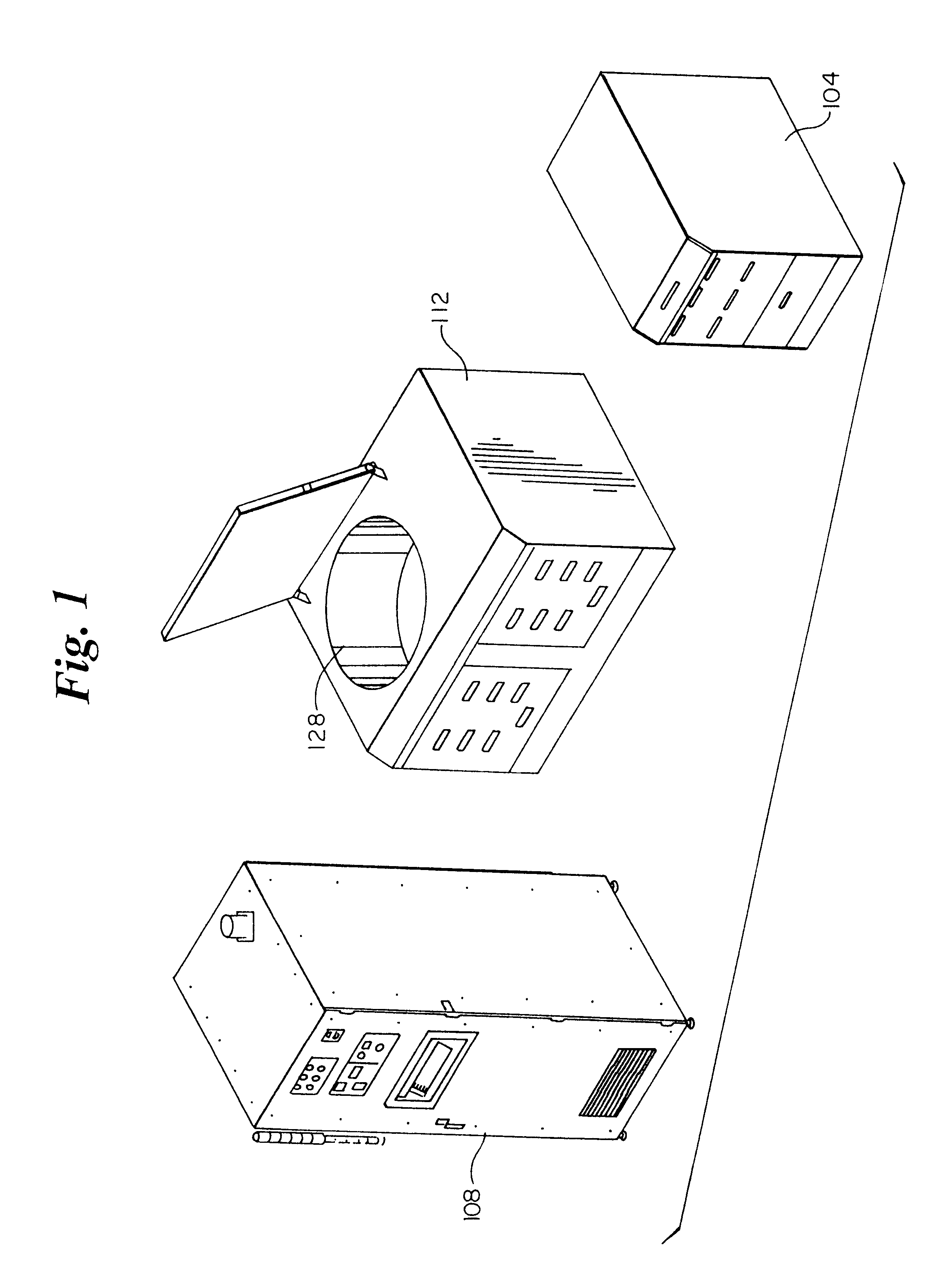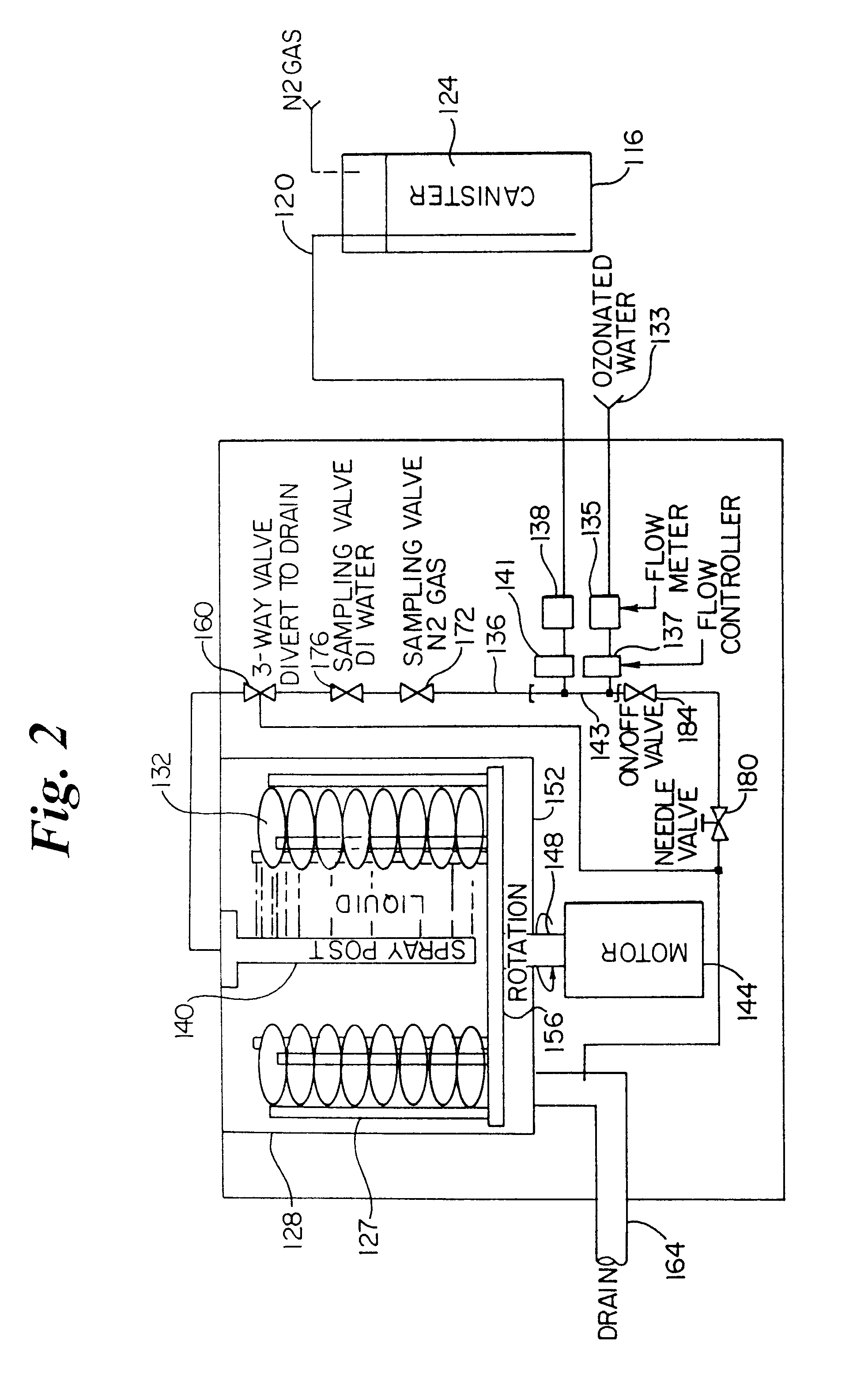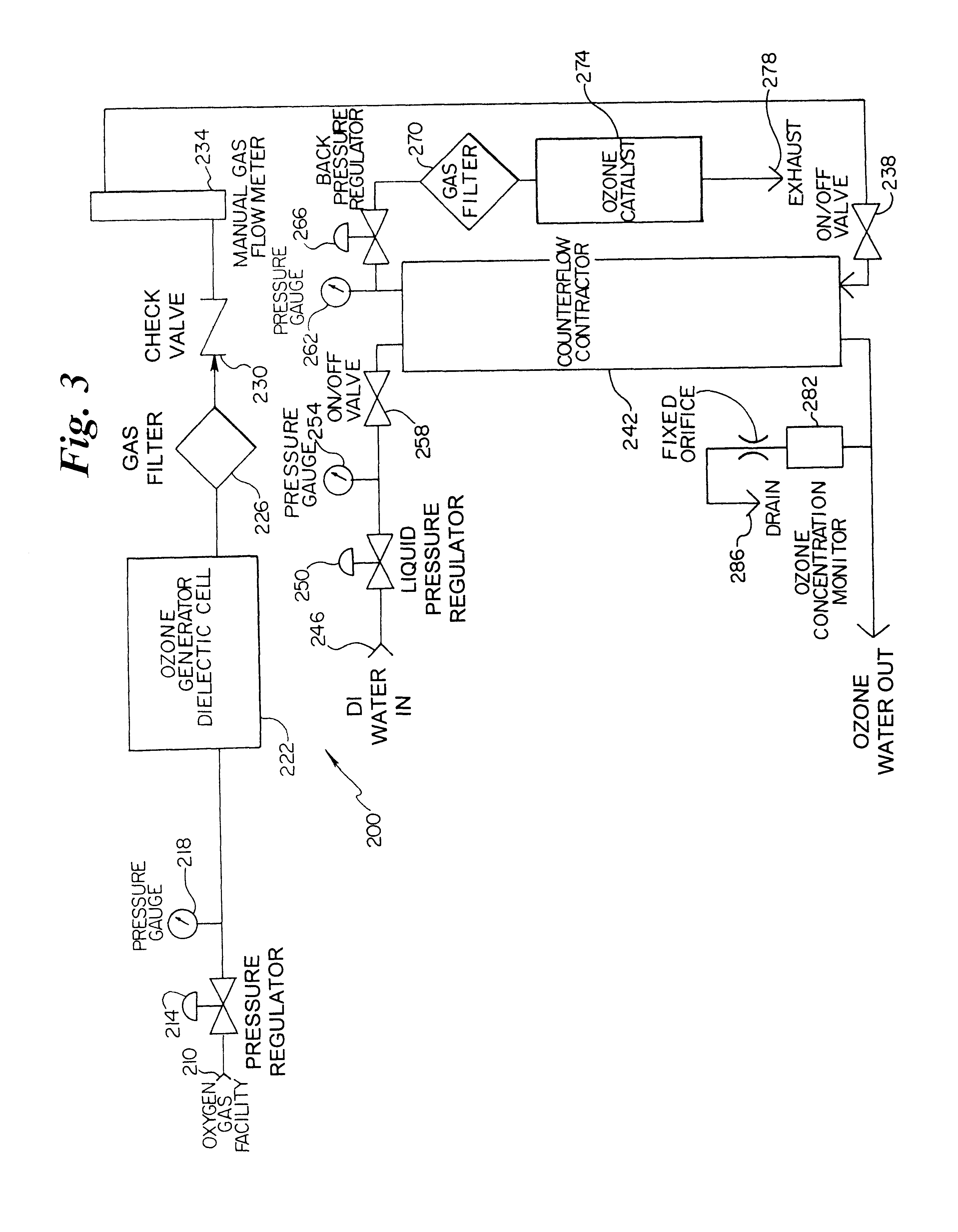Organic removal process
a technology of organic material removal and organic material, applied in the field of organic material removal process, can solve the problems of high disposal cost, high disposal cost, and high safety and health hazards of solvents, and achieve the effect of enhancing the removal rate of organic material and fast removal of undesired photoresist or other organic materials
- Summary
- Abstract
- Description
- Claims
- Application Information
AI Technical Summary
Benefits of technology
Problems solved by technology
Method used
Image
Examples
##ventive example 1
Inventive Example 1
This example, using the present method, demonstrates the improvement resulting from the addition of bicarbonate ion to a solution of ozone in deionized water, as was used in Comparative Example 1. As in Comparative Example 1, 150 mm wafers with a blanket layer of photoresist were used for these experiments. The wafers were treated with 1.32 liters per minute of an aqueous solution containing about 7.times.10.sup.-4 M ozone (36 ppm), and 0.01 M ammonium bicarbonate. The pH of this solution was slightly basic, with a value near 7.5. The net concentration of bicarbonate ion in solution was approximately 9.times.10.sup.-3 M, as a result of the conversion of small amounts of bicarbonate ion to either carbonate ion or carbonic acid. FIG. 6a shows the amount of photoresist remaining on the wafer after processing as a function of treatment time while FIG. 6b shows the rate of removal of photoresist. The removal rate is constant, as in Comparative Example 1, but the invent...
##ventive example 2
Inventive Example 2
FIG. 8a displays the amount of photoresist remaining on a patterned substrate with exposed aluminum lines after treatment with the inventive method. These sample chips were processed with a total flow of 1.32 liters per minute of water, resulting in an ozone concentration of 36 ppm. The solution also contained 0.01 M ammonium bicarbonate (NH.sub.4 HCO.sub.3). At pH 7.5, this leads to a concentration of bicarbonate ion (HCO.sub.3.sup.-) of 9.times.10.sup.-3, which is roughly 10 times greater than the ozone concentration. As seen in FIG. 8b, the removal rate is lower than the rates observed for stripping of hard-baked photoresist from silicon surfaces. However, the rate is fairly constant and all of the photoresist is removed from the wafer after less than 15 minutes of processing.
The much higher photoresist removal rates observed when ammonium bicarbonate is added are believed to be due to the radical scavenging properties of the bicarbonate ion, HCO.sub.3-. Both c...
##ventive example 3
Inventive Example 3
In this experiment, the ammonium bicarbonate concentration was reduced to 2.times.10.sup.-3 M, leading to an effective bicarbonate ion concentration at pH 7.5 of about 1.8.times.10.sup.-3 M, or about a factor of two greater than the ozone concentration.
FIG. 9a displays results for the amount of photoresist remaining on the surface after various processing times. As was the case for higher bicarbonate ion concentration of 9.times.10.sup.-3 M, the amount of resist still on the surface decreases linearly with time. The rate of removal in FIG. 9b, however, is 20-25% lower than in the higher concentration case.
As noted above, the rate of reaction between OH radicals and bicarbonate ions is similar to the rate of reaction between OH radicals and O.sub.3. With similar concentrations of bicarbonate ions and ozone molecules, it is believed that the ozone molecules compete effectively with the bicarbonate ions for reaction with the OH radicals. As a result, a portion of the...
PUM
| Property | Measurement | Unit |
|---|---|---|
| pH | aaaaa | aaaaa |
| pH | aaaaa | aaaaa |
| pH | aaaaa | aaaaa |
Abstract
Description
Claims
Application Information
 Login to View More
Login to View More - R&D
- Intellectual Property
- Life Sciences
- Materials
- Tech Scout
- Unparalleled Data Quality
- Higher Quality Content
- 60% Fewer Hallucinations
Browse by: Latest US Patents, China's latest patents, Technical Efficacy Thesaurus, Application Domain, Technology Topic, Popular Technical Reports.
© 2025 PatSnap. All rights reserved.Legal|Privacy policy|Modern Slavery Act Transparency Statement|Sitemap|About US| Contact US: help@patsnap.com



